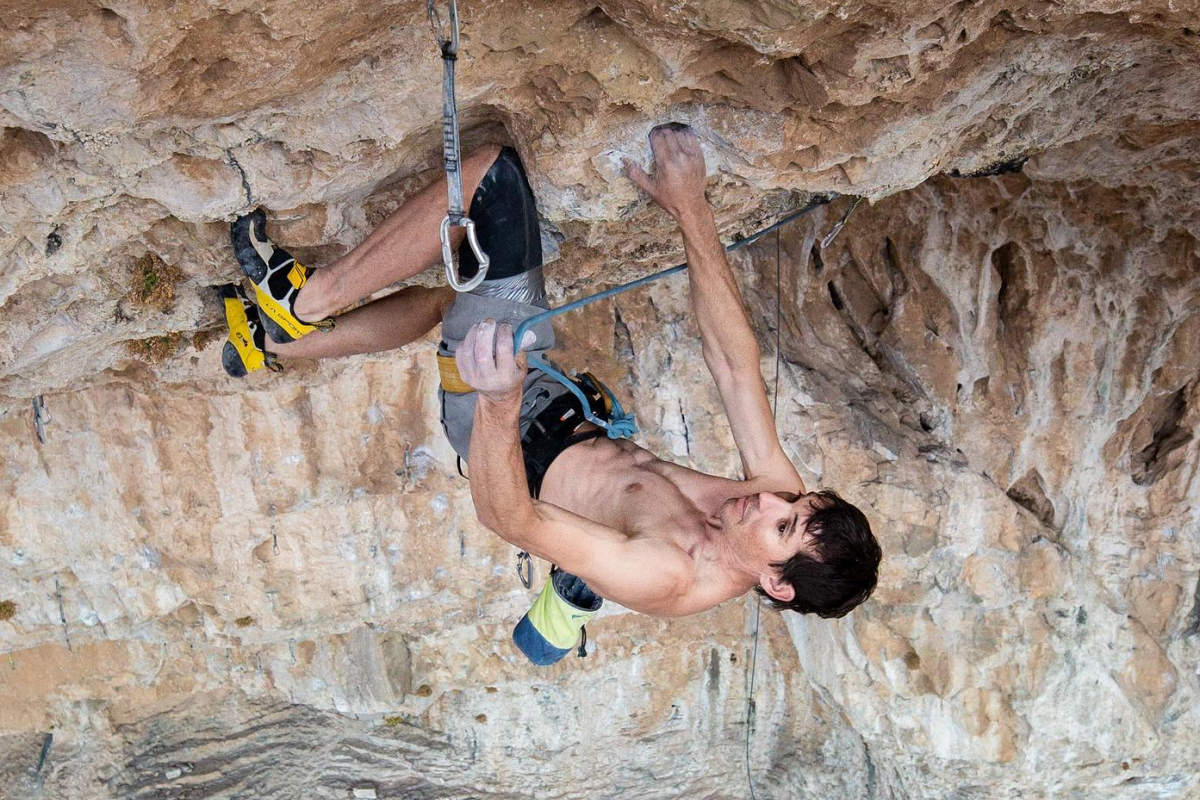2018 has been a treat for climbers with the release of two of the biggest films in climbing history. “Free Solo” features Alex Honnold’s death-defying rope-less ascent of El Capitan via his own variation of the Freerider route. To anyone, the feat itself was easily accepted as a Herculean effort and the story of a man like no other.
If “Free Solo” is a story one of person committed to the present moment, “The Dawn Wall” is about a man dedicated to the future. Tommy Caldwell is a man obsessed. In the film, we see the build up of Tommy’s life to who he would become as a climber and as a person. The culmination of this would lead, with Kevin Jorgeson, to attempting the first ascent of the longest, hardest route in climbing history – The Dawn Wall.
El Capitan and The Nose
The legendary El Capitan formation in Yosemite Park is famous for it’s big wall climbing. Big wall meaning 3,000 feet, multi-day (sometimes weeks or months), hauling food, gear, and everything you need to survive sleeping on the wall. It takes a certain type of climber to want everything that comes along with topping out on these routes, and Tommy Caldwell almost defines that type.
The Nose is the front section that juts out like a nose. The first ascent was by means of fixed ropes, hammering pitons into the wall, and using “aid” devices that allowed passing sections where climbing with hands and feet were deemed impossible. As time went on multiple different routes were climbed in this manner until in 1994 Lynn Hill free climbed “The Nose” of El Capitan. This kicked off a new era of big wall climbing at El Cap where gear was now only for safety rather than being used to help the push upwards. Many routes were established and are now regularly climbed on the Nose, and it is common for multiple groups to be on the same route at the same time, often passing each other when needed.
Take a look at some of our other favorites – Best Climbing Documentaries
What is the Dawn Wall?
The film shows us the roots of Tommy’s obsession with big wall climbing, and how over the course of five years he climbs every route on El Cap, eventually looking to create a new route where previously it had been thought impossible to free climb. We see the work of one man alone on a huge blank section of El Cap, cleaning, checking, and testing to see inch by inch if the route only he saw was possible. Eventually Caldwell finds one continuous line he would call The Dawn Wall. The 32 pitch route of 3,000 feet contains more hard single pitches than all of El Cap’s other routes combined, with a middle section of 2-3 pitches traversing across that were almost entirely blank of holds.

The style of the climb planned was for two people to climb the entire route, from the ground, both completing each pitch on lead and lowering to retry that pitch if they fell. Many saw it as the impossible task. It would take seven years of attempts and multiple climbing partners to get to the point at which the film shows us the latest attempt in 2015.
So How is the Film?
Firstly, you don’t have to be a climber to enjoy the film. Non-climbers will easily understand the technical aspects with simple explanations. Well done infographics and clever use of text and routes overlaid onto the giant wall help to understand what is happening at each step – and will shock climbers to see the grading involved.
The documentary gives the narrative of Tommy Caldwell’s life, including the incredible true story of when he and a team of climbers, including his wife Beth Rodden, were captured by militant Islamic terrorists in Kyrgyzstan. This event and the shocking means of their escape and survival would leave a great mark in his life and in many ways push him to the titular climb of the film. We also see how he dealt with losing half of his index finger in a table saw accident – an accident that could easily cut short any pro climber’s career.
Some of the most endearing moments of the film include Tommy Caldwell’s father Mike Caldwell. A former bodybuilder and mountain guide, Mike took Tommy on his first climbs as young as 6, skiing at 3, camping out in the wilderness, and encouraged him to climb in competitions.
We are introduced to Tommy’s partner in this endeavor – Kevin Jorgeson. As a notably strong boulderer with no experience of big wall climbing, Kevin’s inclusion in the climb becomes it’s own tale and leads to some of the most dramatic and heart-wrenching aspects of the documentary.
The film introduces each element of the story in a way that intersperses the climb with the human stories. The makers weave the history into the physical act of the attempt seamlessly, answering the questions you were just about to ask, and adding soul to the body of the climb.
As we get into the high point of the drama it genuinely feels as if you are really there in the meadows cheering them on. At this point the media start reporting the attempt, and the world starts to watch eagerly to see what will happen. The drama and tension are built perfectly as we join with the characters moving past the why and how, into the doing of the impossible.
Find out who has climbed the Dawn Wall
Ultimately the film succeeds as an engrossing documentary as well as a historical achievement in climbing. “The Dawn Wall” is well worth a watch and is suitable for anyone who enjoys a story. If you were one of the many climbers who remembers checking the daily updates and media from onlookers, you’ll be drawn back to one of the rare occasions where climbers of all styles were excited about the same thing.
You can rent or buy the film now at Amazon for less than five bucks or get the film on blu ray too. Tommy also wrote a book – “The Push” – that gives the inside perspective on the films events, also available on Amazon as an ebook, audiobook, or in print. We’ll have a review of this very soon. Scroll down for a mini doc that goes behind the scenes of filming the event. A big screen and a portaledge are recommended for optimal viewing.





6 thoughts on ““Dawn Wall” film review – Still a big deal”
Comments are closed.